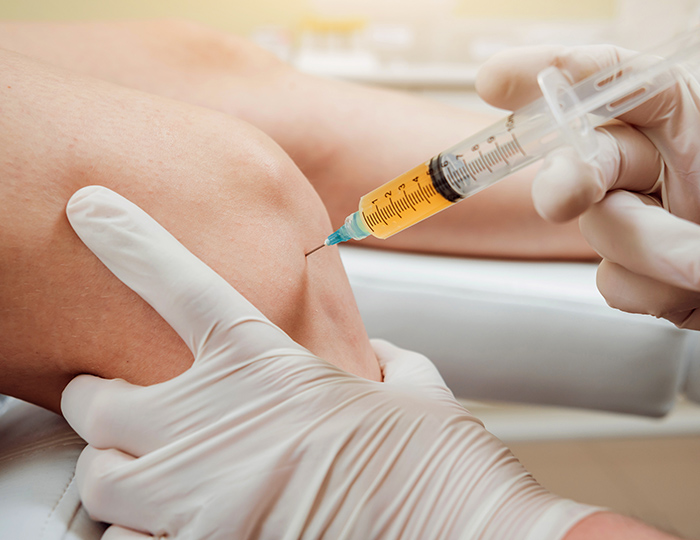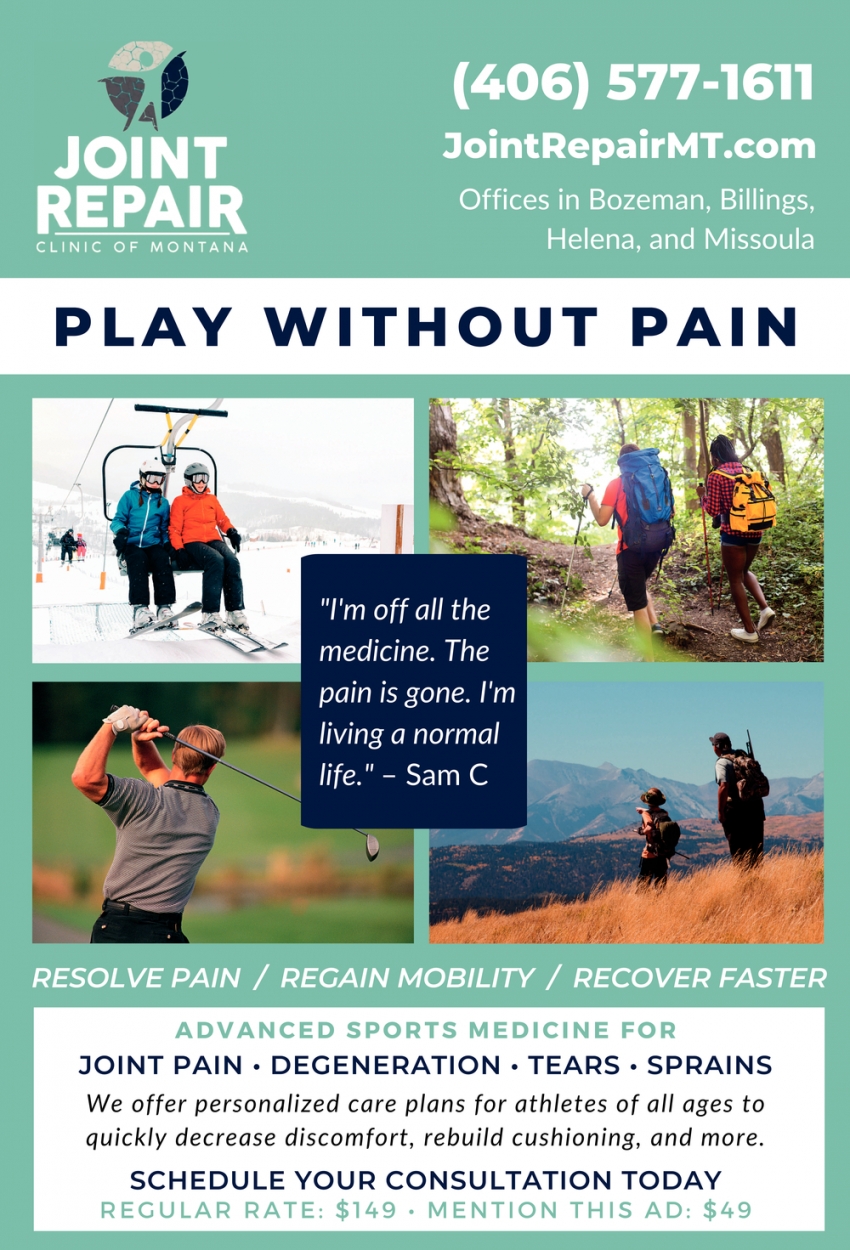Understanding the Benefits of Human Umbilical Cable Tissue Injection for Joint Discomfort Relief

Joint discomfort is an extremely typical issue that can have a huge influence on a person's quality of life. In the past, individuals would need to rely on using prescription medications and even surgical treatment to help in reducing the discomfort and pain associated with joint discomfort. However, nowadays, there is a much more natural and reliable way to deal with joint pain. Platelet Rich Plasma (PRP) treatment has become increasingly popular over the past couple of years and is getting recognition as a feasible treatment choice for joint discomfort. This comprehensive guide will supply an introduction of PRP therapy and how it can help deal with joint discomfort. It will cover whatever from how PRP works to the different kinds of PRP treatments available, as well as the possible advantages and threats associated with this approach of treatment. By the end of this guide, you will have a much better understanding of PRP treatment and how it can be utilized to successfully treat joint pain.
What is Platelet Rich Plasma (PRP) Therapy?
PRP treatment is a treatment that includes drawing out a sample of blood from the client, separating the platelets within the blood, and then re-injecting the platelets back into the patient's hurt or painful joint. Essentially, the platelets are what make PRP treatment so effective. Platelets are naturally occurring blood components that are abundant in development elements. Growth aspects are proteins that promote cellular regeneration and tissue repair, which is why they are used in numerous different types of medical treatments. By extracting the platelets out of the patient's blood sample and re-injecting them back into the patient's hurt joint, they are essentially supplying their body with the required proteins needed to begin the healing procedure. This procedure can assist treat a variety of different conditions and injuries such
How Does PRP Treatment Work?
When the platelets are extracted from the patient's blood sample and re-injected back into the client, they stimulate the recovery procedure in the client's hurt joint. This Author within the platelets are what are responsible for stimulating this healing process. Basically, the platelets function as little bio-factories that produce proteins which assist to promote the recovery procedure and accelerate healing time. As the platelets are re-injected back into the client's injured joint, they trigger the body's own recovery procedure and help to reduce the discomfort and inflammation connected with the injury. They also assist to promote a more quick healing process, leading to less down-time periods and a quicker return to regular day-to-day activities. By treating joint pain with PRP therapy, you can help reduce joint discomfort, boost mobility, and accelerate your recovery time.
What are the Advantages of PRP Therapy for Joint Pain?

As PRP treatment is so effective at lowering joint discomfort, discomfort, and swelling, it is the ideal treatment choice for anybody who is experiencing joint pain. PRP therapy has the ability to minimize the pain and pain associated with joint discomfort by stimulating the body's own healing procedure and naturally speeding up the rate of recovery time. PRP therapy is also incredibly effective at assisting to increase mobility in the affected joint and lowering the threat of tightness and swelling. As the body's recovery procedure is naturally accelerated, you will likely find that your joint discomfort subsides much more rapidly and you will be able to return to your routine day-to-day activities more quickly than you would if you were to depend on prescription medications. PRP therapy is a far more natural and efficient method to treating joint discomfort, and is extremely useful due to the fact that it is minimally intrusive and does not need any down period.

What are the Various Kinds Of PRP Treatments for Joint Pain?
For each person, there are various kinds of PRP treatments that can be used for dealing with joint discomfort. For example, if you are experiencing knee discomfort, you could choose a PRP injection into your knee joint. This treatment can be used to deal with a variety of conditions consisting of: arthritis, osteoarthritis, rheumatoid arthritis, joint separation, muscle sprains, and tendonitis. There are also various kinds of PRP injections that can be utilized to deal with various areas of the body, including the knees, shoulders, elbows, and wrists.
What are the Prospective Dangers and Negative Effects of PRP Treatment?
As PRP treatment is a natural and effective method to treat joint pain and speed up the healing procedure, it is extremely safe and features extremely couple of adverse effects or threats. Basically, PRP therapy is only utilizing the client's own blood and there are practically no dangers associated with PRP. Although PRP therapy is extremely safe and efficient, there are some things to be familiar with before going through the treatment. PRP therapy may take a little longer to begin working as it is a more natural and slower process than taking medications. It is important to keep in mind that not everyone will respond to PRP therapy, and it is very important to discuss your alternatives with your doctor.
platelet-rich plasma injection for neck pain
How to Prepare for PRP Therapy?
Prior to you set up a visit for PRP treatment, it is essential to make sure that it is the best treatment choice for you. PRP treatment is finest matched for people who are struggling with persistent discomfort or discomfort that is triggered by an injury or a particular condition. For example, if you have been identified with arthritis and experience a great deal of pain and pain in your knees and joints, PRP treatment could be a good alternative for treating your pain. PRP therapy is minimally intrusive, so there is no requirement to fret about an intrusive or risky surgery. PRP therapy can likewise be utilized to deal with sports injuries and assist speed up the healing process. For PRP therapy, you will need to ensure that you remain in health which your body has no present health problems or infections. You will also need to make certain that you are not taking any blood thinning medications as these can interfere with the effectiveness of PRP treatment.
What to Expect Throughout PRP Therapy?
PRP treatment is a fairly easy procedure that takes really little time to finish. The first step in the process is to draw blood from the client and isolate the platelets from the sample. The blood sample is placed in a centrifuge and spun around to separate out the platelets and blood cells. Then, the platelets are re-injected back into the patient's injured joint and the blood cells are disposed of. The entire treatment is exceptionally safe and pain-free, and is frequently done as an outpatient procedure in a center or medical professional's workplace. You will only require to be in the clinic for a few hours and you will be able to go home after the treatment and rest as you typically would. Depending on the kind of PRP treatment you are receiving, there might be some moderate to moderate swelling, however this ought to decrease within a couple of days after the treatment.
What to Expect After PRP Therapy?
After you have gone through PRP therapy, you will likely discover an almost immediate enhancement in your joint pain and increased mobility. As the platelets are naturally recovering your joint and accelerating the body's natural recovery process, you must see an enhancement within a couple of days. It is likely, nevertheless, that you will see the most significant difference in between PRP treatment and regular medications after about a week. After PRP therapy, it is very important to rest and enable your joint to recover, however you ought to be able to return to your regular day-to-day activities sooner than you would after taking a routine pain medication. One of the very best features of PRP treatment is that it does not require you to take any drugs, so you do not have to fret about prospective adverse effects or long-term health issues.
What are the Costs of PRP Treatment?
The cost of PRP therapy can vary depending on the specific center or doctor's workplace where you choose to have the treatment carried out. PRP treatment is a minimally invasive procedure that is frequently completed as an outpatient procedure and does not require any down time. As such, PRP therapy is often more inexpensive than numerous other treatment choices. Depending upon the center you check out and what kind of PRP therapy you receive, the costs of PRP therapy can vary from a few hundred dollars to a few thousand dollars. Keep in mind that PRP treatment is a a lot more natural treatment choice that assists to speed up the body's own healing procedure and is typically safer and more economical than taking prescription medications. As such, it is necessary to do your research study and consult with your doctor to identify if PRP therapy is the very best treatment choice for you.

Today's regenerative medicine blog has been sponsored partially by Joint Repair Clinic of Montana.
Joint Repair Clinic of Montana is a regenerative health center located in Billings. Joint Repair Clinic of Montana offers prolotherapy therapy.
Joint Repair Clinic of Montana
10 Avanta Way, Suite 1, Billings, MT 59102
(406) 413-9670
https://www.jointrepairmt.com/billings
